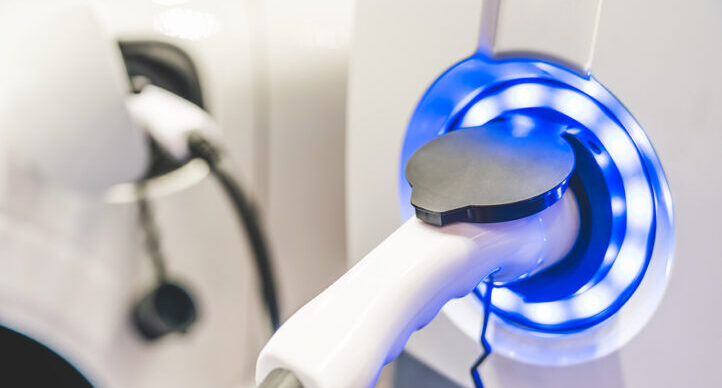Matt De Propertis is the founder and CEO of ChargePost, a start-up revolutionising electric vehicle (EV) charging in Australia. I talked to Matt about the technology behind the business and its potential impact on the development of the EV market here.
ISB: Please tell us briefly about your professional background prior to launching ChargePost.
MDP: Born and raised in Melbourne, I completed a Bachelor of Accounting/Management at La Trobe University then worked at a large accounting firm for two years as a growth analyst, before I decided to take over the family newspaper, magazine and plastics distribution business with my twin brother when my father retired. When circulation numbers of newspapers and magazines started to diminish, I decided to study further and completed my Master’s of Property at RMIT in 2018, subsequently transitioning to the property consulting and advisory sector. I have been working with BRM Projects for over four years on Victoria’s largest infrastructure projects as well as assisting clients on all things commercial property acquisition and leasing related. I am still working with BRM Projects while running ChargePost, as I love my role there.
ISB: What was the inspiration behind the launch of ChargePost, and when and where did the business launch?
MDP: My mother- and father-in-law live in a beautiful little house in Geelong that’s been in the family for over 100 years. Transitioning to solar panels and considering battery-storage solutions, the next logical part of the equation was an electric vehicle. “We’re keen to transition to an EV but we don’t have access to off-street parking”, my father-in-law said. With no garage or ability to park off-street, and local councils supporting running cables across footpaths, I had a ‘lightbulb moment’ wondering how other parts of the world solve this problem.
“ChargePost can connect to existing light poles or lamp posts.”
In 2021, I set about researching every corner of the globe for a solution for my mother-in-law and father-in-law. I’m a big believer in not re-inventing the wheel and was keen to learn more from countries further advanced in EV charging infrastructure. Fortunately, I came across a well-established on-street charger manufacturer in the UK, CityEV, which has been developing and refining EV charging hardware and software since 2012, and who have successfully partnered with other charge point operators throughout the UK and Europe. They have over 20,000 installs to date, despite having officially launched the product only in 2018. ChargePost has been the exclusive distributor for CityEV throughout Australia since 2022.
ISB: What role has your co-founder, Gab Aghion, played in the development of the business?
MDP: Gab joined ChargePost in April 2023. He has been instrumental with high-level strategic and analytical guidance. He brings over 20 years of property and business consulting experience, in particular working with the Victorian Government on large infrastructure projects including the West Gate Tunnel, Level Crossing Removal, North East Link, Suburban Rail Loop and Airport Rail Link.
ISB: What makes your chargers stand out from others on the market?
MDP: ChargePost hardware has been specifically designed and engineered to connect onto existing power poles and light poles. We design, supply and install 7kW single-phase (which will charge an EV in six-to-eight hours), and a 22kW three-phase (which will charge an EV in three-to-four hours). It’s about the size of an AFL football, weighs approximately 4 kilograms, and is jam-packed with smart functionality, including an electricity MID meter and 4G sim card, and can be installed in 30-60 minutes, requiring no digging up of pavement to run additional cables underground or civil works permits.
ISB: How do users pay for the service?
MDP: Customers can pay via credit-card contactless payment, QR card or via our app. Our solution is two or three times cheaper than comparable hardware on the market.
ISB: I understand collaboration with local councils is a core aspect of what you do. How does that work in practice and what outcomes does that collaboration generate?
MDP: Our long-term vision is to provide a practical, equitable and ubiquitous charging solution for everyone. At the moment, due to the high price tag of EVs (which will become more affordable in the coming years), most EV drivers live within inner-city metro areas with a medium-to-high disposable income and are environmentally conscious. But most publicly available chargers are found in a carpark, close to the front entrance or next to the disability parks. This is largely due to the enormous cost of installation and the need to be close to existing switchboards/power sources. We are proposing a ubiquitous and equitable solution. Because ChargePost can connect to existing light poles or lamp posts, it can be installed throughout carparks and on kerbside power poles. Parking is an extremely sensitive and contentious issue, particularly in very high-density pockets of Sydney and Melbourne. And if ChargePost chargers are evenly distributed throughout local council areas and available to the public, we do not need to restrict specific parking spots to EV drivers only. Whilst we can signpost ‘recommended for EV drivers only whilst charging’, the last thing we want to do is take away more on-street parking, which is already scarce, and designate it to EV drivers only. We don’t think that would be the fairest solution for residents and councils and parking is already an extremely sensitive and contentious issue, particularly in very high-density pockets of Sydney and Melbourne.
Because our chargers are cost-effective, with a relatively fast payback period, we partner with local councils and profit share on every customer transaction, thereby providing a long-term income-generating asset for local councils to provide funds for public infrastructure upgrades. Our long-term goal is a practical, affordable and equitable public charging solution for residents without access to off-street parking. As more apartment complexes replace free-standing homes and housing density increases in our major capital cities, more and more residents will require alternative solutions to publicly available charging stations.
ISB: How do you see ChargePost growing and developing in the next couple of years?
MDP: We aim to make ChargePost the preferred kerbside EV charging solution when connecting to power poles and lamp posts. In the UK since 2017, more than 25,000 on-street charging units have been installed. There is no one-size-fits-all solution or silver bullet that will solve the challenges of EV public charging. The government and councils agree there must be a mix of both fast and slow chargers to accommodate people’s charging habits and preferences. Contradictory to most businesses, given the relatively new and innovative space, we actually encourage competition in the market, as private enterprise will accelerate innovation and ultimately provide a more competitive pricing solution for councils and EV drivers alike. We are constantly re-investing in the research and development of our hardware and software solutions, with the release of our new dual port charger in October 2023 (one unit with two charging ports), among other innovations in the pipeline for 2024. We would like to think we will be a very small part of the transition to sustainable transport solutions, helping councils and government achieve net-zero targets.
This article first appeared in issue 43 of the Inside Small Business quarterly magazine











